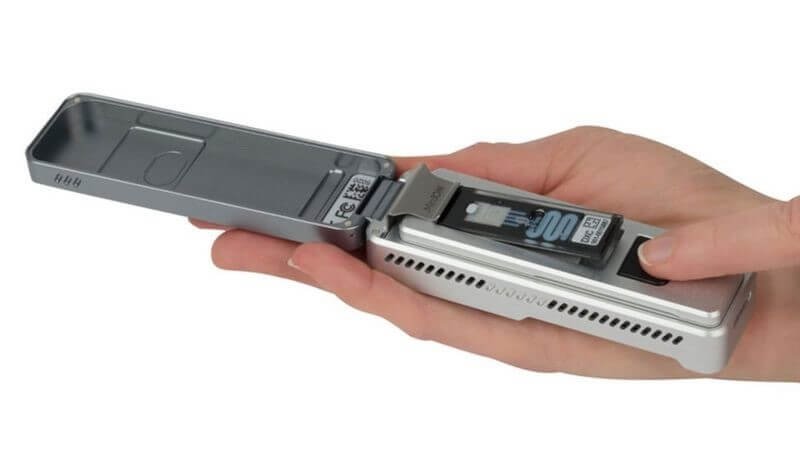Scientists have used a device that fits in the palm of the hand to sequence the human genome. They say the feat, detailed in the journal Nature Biotechnology, opens up exciting possibilities for using genetics in routine medicine. It is a far cry from the effort to sequence the first human genome which started in 1990.
…
Prof Nicholas Loman, one of the researchers and from the University of Birmingham, UK, told the BBC: “We’ve gone from a situation where you can only do genome sequencing for a huge amount of money in well equipped labs to one where we can have genome sequencing literally in your pocket just like a mobile phone.
…
Prof Loman used the handheld device to track the spread of Ebola during the outbreak in West Africa.
…
The technology works by passing long strands of DNA through a tiny hole (the eponymous nanopore). The building blocks of DNA are four bases known by their letters A, C, G and T. As each passes through the pore it creates a unique electrical signal that allows researchers to determine the DNA sequence. The research group say the approach was around 99.5% accurate, but also allowed them to look at parts of human DNA that had been poorly studied.
Read full, original post: Handheld device sequences human genome































